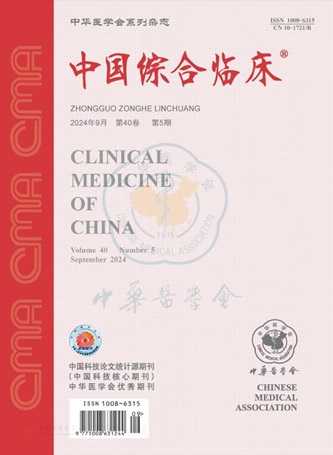医用止血材料防治乳腺癌术后皮下积液的临床分析
引用次数: 0
摘要
目的观察医用即时止血纱布联合速丝即时纱布对改良乳房根治术后引流及皮瓣愈合的影响。方法选取2015年8月至2016年8月在北京市朝阳区环星肿瘤医院行改良乳房根治术的乳腺癌患者80例。根据随机数字表法,将80例准备行改良乳房根治术的乳腺癌患者随机分为研究组(40例)和对照组(40例)。研究组在手术创面术中应用两种止血材料(医用溶血止血纱布联合原纤维快速止血纱布),对照组术中不使用医用止血材料,其他处理与研究组相同。比较两组患者术后1 ~ 5天总引流量及拔管时间。结果两组患者年龄、体重指数、积液量比较,差异均无统计学意义(P < 0.05)。研究组总引流量为(289.23±5.36)ml,对照组总引流量为(492.15±8.56)ml,两组比较差异有统计学意义(t=8.543, P<0.05)。研究组拔管时间为(6.24±1.23)d,对照组拔管时间为(10.12±2.21)d。两组比较差异有统计学意义(t=6.203, P<0.05)。结论除止血作用外,术中使用可吸收止血纱布联合手术纤维可显著减少术后皮下积液。关键词:医用止血材料;乳腺癌;皮下积液本文章由计算机程序翻译,如有差异,请以英文原文为准。
Clinical analysis of medical hemostatic materials for prevention and treatment of subcutaneous hydrops after breast cancer operation
Objective To observe the effect of medical instant hemostasis gauze combined with filament speed instant gauze on the drainage and flap healing after modified radical mastectomy. Methods From August 2015 to August 2016, a total of 80 patients with modified radical mastectomy for breast cancer admitted to Huanxing Tumor Hospital, Chaoyang District, Beijing were selected.According to the random number table method, 80 patients who were ready for modified radical mastectomy for breast cancer were randomly divided into study group (40 cases) and control group (40 cases). Two kinds of hemostatic materials (medical hemolytic hemostatic gauze combined with fibril quick hemostatic gauze) were applied to the surgical wounds in the study group during the operation, while no medical hemostatic materials were used in the control group during the operation, and the other treatment was the same as that in the study group.Total drainage volume and drainage tube removal time were compared between the two groups 1 to 5 days after operation. Results There were no statistically significant differences in the age, body mass index, and effusion production between the two groups (all P>0.05). The total drainage volume of the study group was (289.23±5.36) ml, and the total drainage volume of the control group was (492.15±8.56) ml.The difference between the two groups was statistically significant (t=8.543, P<0.05). The drainage time of the study group was (6.24±1.23) days, and the extraction time of the control group was (10.12±2.21) days.The difference between the two groups was statistically significant (t=6.203, P<0.05). Conclusion In addition to hemostatic function, using absorbable hemostatic gauze combined with surgicel fibrillar during the surgical process can significantly reduce postoperative subcutaneous fluid accumulation. Key words: Medical hemostatic material; Breast Cancer; Subcutaneous fluid accumulation
求助全文
通过发布文献求助,成功后即可免费获取论文全文。
去求助
来源期刊
CiteScore
0.10
自引率
0.00%
发文量
16855
期刊介绍:
Clinical Medicine of China is an academic journal organized by the Chinese Medical Association (CMA), which mainly publishes original research papers, reviews and commentaries in the field.
Clinical Medicine of China is a source journal of Peking University (2000 and 2004 editions), a core journal of Chinese science and technology, an academic journal of RCCSE China Core (Extended Edition), and has been published in Chemical Abstracts of the United States (CA), Abstracts Journal of Russia (AJ), Chinese Core Journals (Selection) Database, Chinese Science and Technology Materials Directory, Wanfang Database, China Academic Journal Database, JST Japan Science and Technology Agency Database (Japanese) (2018) and other databases.

 求助内容:
求助内容: 应助结果提醒方式:
应助结果提醒方式:


